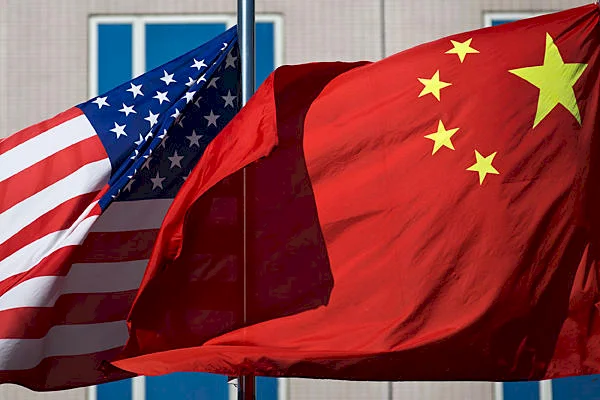SadaNews – After six months since U.S. President Donald Trump’s launch of the trade war, the robustness of China’s exports confirms the vital importance of many of its products, despite U.S. tariffs that have reached 55%.
Daily, Chinese goods worth nearly one billion dollars are shipped to the United States across the Pacific, with a slight increase in shipment volumes recorded in September compared to August. Despite a decline in the overall trade value by a marginal percentage over the past six months, exports of certain products have risen compared to 2024, challenging the escalating tensions between Beijing and Washington.
This data reveals that the ability of tariffs to curb what U.S. companies import is relatively limited, especially given the difficulty of surpassing China’s dominance in sectors such as rare metals and electronics, at least in the short term. However, this reality may change over time, particularly if Trump follows through on his repeated threats to impose additional tariffs.
Exports as a Bargaining Chip in Xi’s Hand
Economic experts at Bloomberg, Zhang Shu and David Kuo, wrote that “China’s strong position in global supply chains gives it a degree of bargaining power with American importers in the short term,” warning that other countries cannot quickly compensate for China as a major supplier to the U.S. They added, “Redirecting production will take time.”
This reality supports President Xi Jinping’s negotiating position as his team prepares for talks aimed at extending the temporary tariff truce beyond the 90-day deadline ending in November. The value of Chinese goods entering the U.S. market during the third quarter surpassed 100 billion dollars, helping Beijing to maintain economic growth momentum within the annual target and pushing the bilateral trade surplus to 67 billion dollars.
In contrast, U.S. President Donald Trump predicted on Tuesday that a “good agreement” would be reached during his upcoming meeting with his Chinese counterpart, but he did not rule out the possibility of the meeting faltering, which is scheduled to take place on the sidelines of a summit in South Korea next week. Trump focused on three main issues in his negotiations: rare metals, fentanyl, and soybeans.
Growth in Exports of Certain Chinese Products
The commercial relationship between the two largest economies in the world extends beyond the goods that China dominates in its global supply chains, such as magnets essential to U.S. industries or chemicals used in commonly used medications.
According to an analysis by Bloomberg of Chinese customs data, although most of the top 10 export products to the United States experienced a decline during the last quarter compared to the same period last year, shipments of electronic cigarettes recorded an increase. Additionally, U.S. demand for electric bicycles maintained its momentum, as Chinese companies exported e-bikes worth over 500 million dollars in the three months ending in September, representing a slight annual increase.
Conversely, exports of refined copper jumped from nearly zero to 270 million dollars, while exports of electrical cables rose by 87% to reach 405 million dollars during the same period.
Chao Ping Sheng, chief strategist for China at Australia & New Zealand Banking Group, stated, “Both parties may seek to reduce their mutual dependence, but it is impossible to reduce it to zero.”
Gaps in the Tariff Wall
Cracks in the tariff wall built by Trump likely contribute to the continuation of part of the trade, by reducing costs for importers.
Chao Ping Sheng explained that some U.S. importers are able to pay lower tariffs by declaring the customs value based on the first sale made in a third country, before raising the price upon the goods arriving at a U.S. port. Additionally, indirect shipping through Mexico or Vietnam also allows some companies to completely avoid the tariffs.
He continued, “There are a lot of loopholes,” pointing out that U.S. customs authorities “do not have enough human resources to close them.”
In the quarter from July to September, Chinese companies shipped goods worth about 8 billion dollars in smartphones, laptops, tablets, and computer parts to the United States. Although this figure is less than half of what was exported in the same period last year, it remains significant given the high tariffs.
Resilience of Small Packages
Despite the cancellation of the “de minimis” rule that exempted small packages entering the United States from tariffs, American consumers continued to spend billions of dollars on purchases from e-commerce platforms such as Shein and Temu, owned by PDD Holdings.
According to Chinese data, despite tariffs of 54%, small packages valued at nearly 5.4 billion dollars were sent to the U.S. market since the Trump administration closed this loophole in May.
Bilateral Trade Heads Towards Contraction
Nevertheless, it seems that trade between China and the United States will shrink, as Trump’s efforts aim to revive domestic industry and make the relocation of vital sectors a strategic priority. Chinese shipments to the United States this year have fallen to below 320 billion dollars, the same level recorded in 2017, prior to the outbreak of the first rounds of the trade war.
Exports of video game consoles from China have also collapsed, after companies like Nintendo and Microsoft resorted to sourcing from Vietnam and other countries to avoid high tariffs. It also appears that American consumers are shifting towards alternative options for televisions, as shipments of flat-screen (LCD) displays from China to the U.S. fell by 73% during the last quarter.
Concerning other products, such as commercial ships, the United States had already begun to disentangle its relationship with China even before Trump imposed tariffs on ships manufactured in China docking in U.S. ports.
Despite signs of resilience, the International Monetary Fund estimates that the damage inflicted on bilateral trade this year exceeds that witnessed during Trump’s first term.
The fund stated in a report released this month: “It seems that the decoupling of trade between the United States and China is happening at a faster pace compared to the shock of tariffs in 2018 and 2019.”
